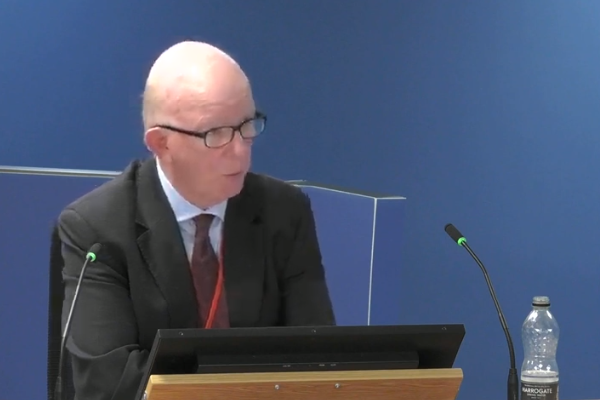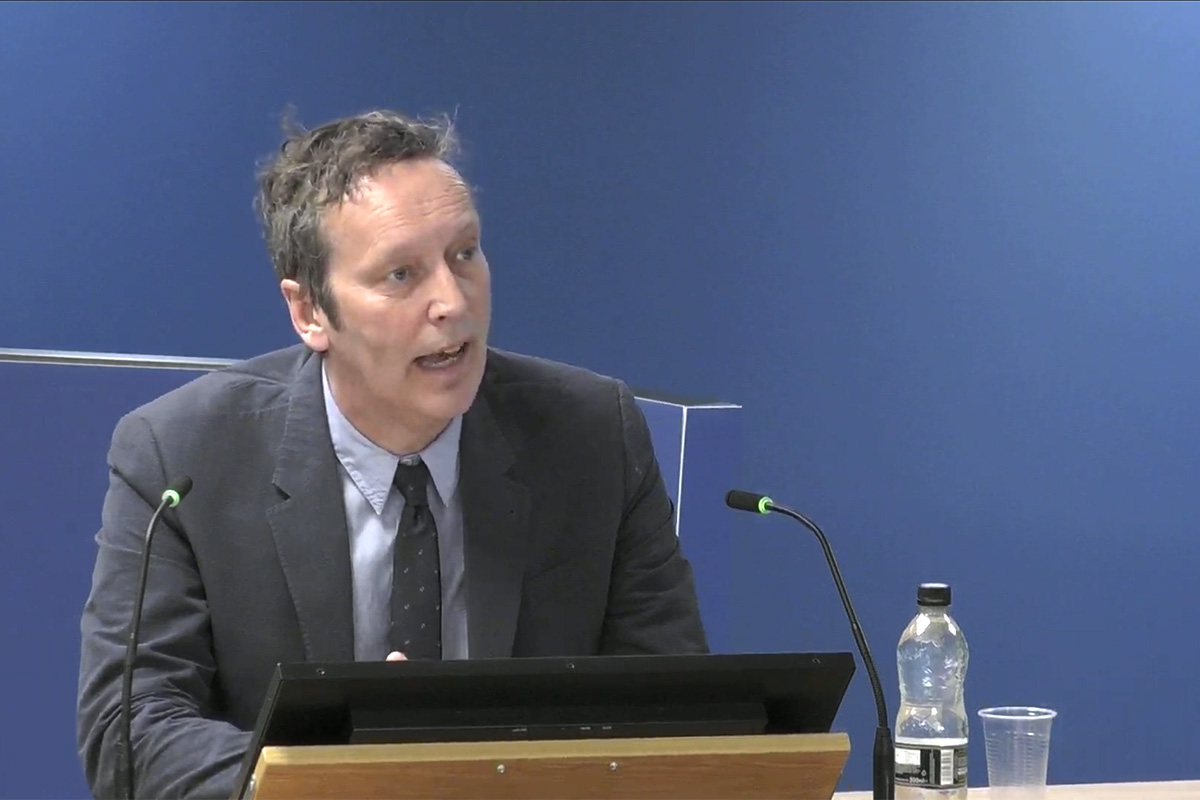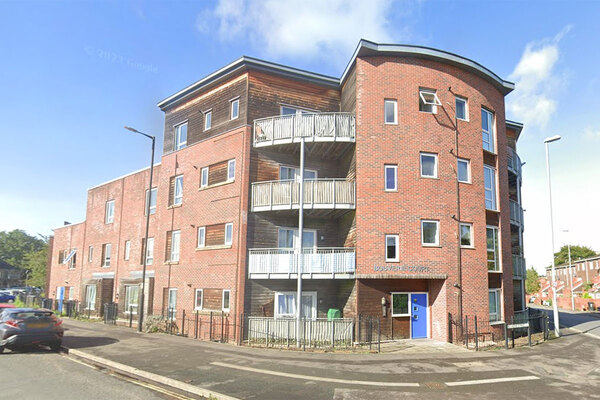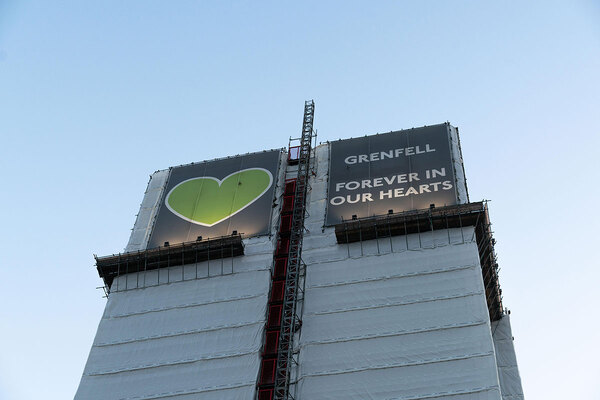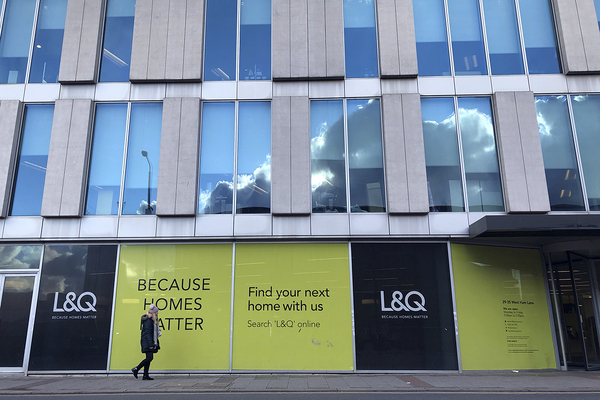You are viewing 1 of your 1 free articles
RBKC ‘said no’ to fire brigade call for safety improvements before Grenfell ‘due to budget’
The Royal Borough of Kensington and Chelsea’s (RBKC) director of housing “said no” to crucial fire safety improvements recommended by the London Fire Brigade (LFB) before the Grenfell Tower fire due to budget concerns, the inquiry heard today.
In October 2015 a fire at Adair Tower – a tower block also owned by RBKC around a mile away from Grenfell Tower – saw smoke spread widely through the block due to defective ‘self-closing’ devices on fire doors.
This resulted in an enforcement notice being issued by the LFB calling for their repair and also pressure to fit self-closers to flat entrance doors across the borough’s housing stock and monitor their performance.
But in October 2016, minutes of an executive team meeting of Kensington and Chelsea Tenant Management Organisation (KCTMO) record Laura Johnson, director of housing, rejecting the proposal.
“LFB are putting pressure on us to fit door closers on all our stock across the business,” the minutes say. “Laura Johnson has said no to this but Sacha [Jevans, executive director of operations at KCTMO] feels there should be discussion at [the] executive team.”
During Ms Jevans’ evidence session today, Andrew Kinnier, counsel to the inquiry, asked her: “Why had Laura Johnson said no?”
Ms Jevans replied: “I think Laura had to make consideration on a balance of, maybe, budget, versus practicalities. And this is an example of something that would be outside of the agreed budget, and it would be unforeseen, and so the TMO would need to go back to council and ask for more money.”
Asked if she personally believed that the organisation should have fitted door closers in line with the LFB’s advice, she said: “I think it was quite clear from the LFB that we should fit door closers on all the stock and I was keen for that to happen.”
KCTMO was an arm’s-length company set up by RBKC to manage the 9,000 homes in the borough and relied on it to set its budget.
Shortly after this meeting, in November 2016, an enforcement notice was served for Grenfell Tower itself. It said: “The protected route [the staircase and the lobbies] has been compromised by the fitting of doors that do not self close.”
KCTMO was given until 18 May 2017 to resolve the issue. The inquiry has already revealed that on the night of the fire on 14 June 2017, many doors did not self-close, allowing the stairwell and lobbies to fill up with toxic black smoke, trapping residents in their homes and hindering efforts to rescue them.
Asked what she had done to make sure the deficiency notice was dealt with on time, Ms Jevans said the matter had been “delegated to Graham Webb”, managing director of KCTMO’s repairs company Repairs Direct.
She added that Janice Wray, head of health and safety at KCTMO, was in charge of deficiency notices so it was “very much her responsibility”.
Earlier, Ms Jevans had been asked about the efforts KCTMO made to reduce its backlog of incomplete remedial actions arising from its fire risk assessments, which stood at close to 1,000 in 2013.
A board meeting in April 2012 noted fears about “our liability if an action had not been completed in the event of a fire”.
Ms Jevans explained that a backlog had built up as a result of “a number of years of failing contractors” – Connaught and then Morrison. She said that Morrison knew it was going to be replaced and in that situation “the failure rate starts to increase, and this relates to that”.
In 2013, concerns were expressed that the incomplete actions may be exposed in an audit of KCTMO’s performance by the council and “it was agreed that we would aim to carry out any outstanding fire risk assessment actions before the audit”.
This audit ultimately advised that ‘key performance indicators’ covering fire safety should be adopted by KCTMO, something that was not done until January 2016, almost three years later.
“Three years was far too long in order to ensure that fire safety formed part of the KPIs, wasn’t it?” Mr Kinnier asked.
Ms Jevans said that KCTMO had been reporting on fire safety in this period and that it had been “working towards trying to get the systems in place to make sure we manage that”.
The inquiry also saw a July 2013 report prepared by consultant Matt Hodgson, which said “governance of health and safety requires a serious review”.
He added: “There was a lack of focus and leadership in making the important changes or decisions to manage risk effectively.
“This issue is not helped by breakdown in communication between the health and safety and other departments specifically in relation to the completion of actions as raised in [fire risk assessments].”
Ms Jevans accepted that “there were gaps” and “that’s why we had to have that focus” on completing actions.
Minutes of a further board meeting in September 2013 record Ms Wray saying that the organisation’s health and safety approach was “reactive and responsive, rather than proactive and was in line with budgetary implications”.
Ms Jevans said she “did not understand the minute” as “budget was never an issue”.
She was then taken through meeting minutes leading right up to 13 June 2017 – the day before the fire – which showed that there were still 287 actions incomplete, with 250 of them more than four months old and 128 more than a year old.
Asked whether she accepted that the problem was “never resolved”, she said: “I think we made good progress, particularly in the six months prior to that, and it would, in my experience, be difficult to ever get to zero when new actions are constantly being generated.”
The afternoon session focused mainly on the performance of Repairs Direct before and after the Grenfell Tower fire, and particularly its inability to clear a repairs backlog that had plagued the organisation for several years before and after it took repairs work in house.
Ms Jevans was a member of the Repairs Direct board.
The inquiry heard that the repairs backlog continued to grow between 2014 and 2017, hitting more than 2,300 in September 2015 and climbing to 4,000 jobs with a value of £1.45m as of February 2016 and 5,400 by January 2017.
The evidence also illustrated the seeming lack of progress on certain aspects of its operations, particularly around health and safety, that Repairs Direct had made in the years between 2014 and 2017.
In December 2014 a health and safety audit had been carried out reviewing Repairs Direct’s performance. The report gave the organisation an overall score of 40 out of 100 on health and safety performance. This included calls for improvement in areas such as health and safety co-ordination, in which it scored two out of 10, and health and safety training, in which it scored one out of five.
But in 2017 a further analysis carried out by Shannon MacInnes, the newly appointed health and safety manager reported “significant failures” across three management systems, including failures around non-compliance with regulatory standards, policies and procedures, and risk management.
When asked why many of the issues highlighted in 2014 remained at Repairs Direct at the time of Ms MacInnes’ gap analysis in 2017, Ms Jevans said: “I think there had remained a series of gaps and it was difficult to recruit that type of person with the expertise needed, and I think the board were concerned and knew that this was an area that needed work.”
In her witness statement reflecting on what happened at the organisation following her report, Ms MacInnes said: “I cannot recall any specific actions taken following the production of my report. I did not feel that health and safety was a priority at Repairs Direct and this was one of the reasons why I left.
“Health and safety concerns were more talk than action.”
The inquiry continues with evidence from Ms Johnson tomorrow.
Sign up for our weekly Grenfell Inquiry newsletter
Each week we send out a newsletter rounding up the key news from the Grenfell Inquiry, along with the headlines from the week
Already have an account? Click here to manage your newsletters
